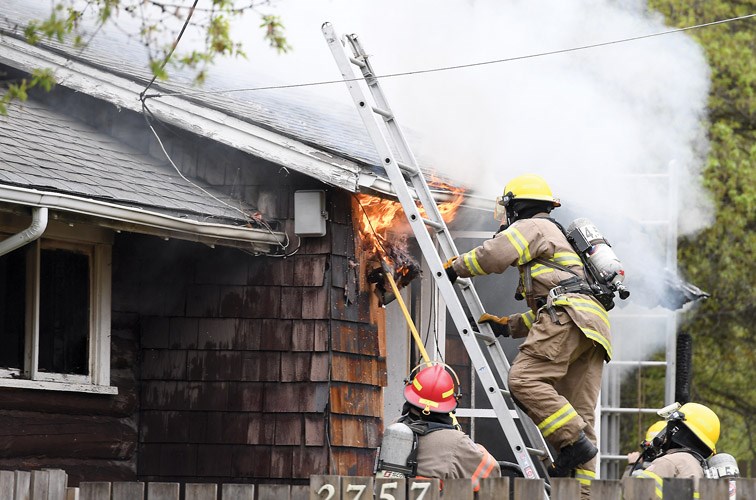A fire struck a piece of Prince George history Thursday morning.
Called to 2757 Queensway St. at 7:30 a.m., firefighters found heavy smoke billowing out of a log home that dates back to the 1920s.
They quickly gained control of the blaze and the home remains standing. But whether it can be salvaged is in doubt. "There is major damage to the structure," Prince George Fire Rescue assistant chief John Law said.
There is quite the tale behind the home, according to research carried out by former city heritage commission member Kirk Gable.
It's nestled at the corner of Queensway and Houston Lane on a property that backs out onto the west bank of the Fraser River and where the BX Steamer and the B.C. Express used to dock.
The land was once owned by Billy Cooke and Russell Peden who operated a sawmill at the bottom of Peden Hill. Peden built a home on the property in 1911 and it became the social centre of South Fort George, not least because it was located near the red light district of the time according to a story in a 1978 edition of the Prince George Citzen.
When Peden died, it was either sold or donated to the Anglican Church and in 1921 moved across town to Ingledew St. in the Miller Addition where it was used as a rectory.
Henry Avison, who had lived in Prince George since 1912, somehow acquired the lots in 1922 or 1923. "They were probably forfeited to the Crown and sold by auction," Gable said.
By then, Avison was a constable with the B.C. Provincial Police and operated the local jail. Apparently not one to miss an opportunity, he enlisted the jail's prisoners to build the home that now stands at the spot.
"It was usual for prisoners to build things and they were usually well built since they had time to construct them well," Ted Williams, an avid local history buff and a son of one of the subsequent pairs of owners, was quoted as saying in the Prince George Citizen.
The four-room home was built with "Hudson Bay corners," in which the logs were sawed off and put together evenly rather than notched.
Avison died in 1924 after a lifetime of accomplishment and adventure. He was given credit for laying out the trails in Vancouver's Stanley Park and becoming the park's first zookeeper. He was in charge of Stanley Park from 1888 until 1898 when he resigned to take part in the Klondike gold rush.
In 1900, he returned from the Yukon and settled in Prince Rupert where he was later appointed health officer for the Omineca and Cariboo districts. In 1912, he transferred his headquarters to Prince George where he remained in the position until 1918 when he joined the police.
Gable said the home would have made a good candidate for the city's heritage registry.
"This one would absolutely qualify," he said. No one as home at the time of the fire and there were no injuries.
An estimated cost of the damage was not immediately available and the cause of the fire had not yet been determined.
The full results of Gable's research, gathered primarily from the Prince George Public Library's digital archives, is posted with this story at pgcitizen.ca.



